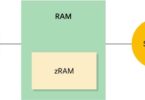The frantic pace, stress, poor diet and lack of exercise are very present against those we fight every day and now, with the help of technology, we can eliminate from our lives.
Nowadays, interest in matters related to health and well-being occupies an important part of our concerns. More and more people are aware of the need to lead a healthy life, and that care is fashionable through technology.
To carry what is now called a healthy lifestyle, we should meet the recommended 8 hours of sleep, make 5 healthy meals a day, perform at least 30 minutes of exercise and look for a space for disconnection and relaxation, a task almost impossible for a person without superpowers.
To fulfill some of these routines, there are more and more products and services by means of technology dedicated to satisfying our ‘wellness’ needs.
Last week the Piscina & Wellness Barcelona 2017 exhibition was held in Barcelona, where technology and the “Internet of Things” played a very important role. In the so-called Technology Innovation Zone you could know the latest technological applications for spas and swimming pools, among which those that promoted an efficient diagnosis of breakdowns by mobile phone and an automated maintenance, or applications that allow energy savings stood out.
One of the most outstanding novelties presented at this technology fair was Zerobody, the dry flotation experience of Thomas Wellness Group from where they assure that this new product, “can provide a method of stress relief since the dry floating experience leads to the person to a condition that activates their most important brain areas. ”
The so-called smart buildings also take into account the concern for wellness, and that is why almost all make use of technology to improve the lifestyle of people. To improve the quality of the air, it is used systems that are connected to intelligent buildings and that allow detecting the levels of carbon monoxide, particles of suspension, mold and other series of undesirable substances. With the water they are implanting some sensors that allow deriving the gray water to toilets and gardens, saving the water of better quality for human consumption.
In the same way that low-quality air and water are harmful to our health, defective lighting also has negative effects. Again, thanks to the use of sensors, buildings are able to know which person is occupying each room and what their preferences are. Through applications that allow real estate managers to collect information about lighting quality, adjustments can be made in real time depending on who occupies the office.
In our day to day, there are also other options like Senssai, an application that helps us to acquire healthy habits. With it, users can discover and share those spaces or public places where it is possible to practice outdoor physical exercise, as well as centers where you can relax and take care of yourself.







